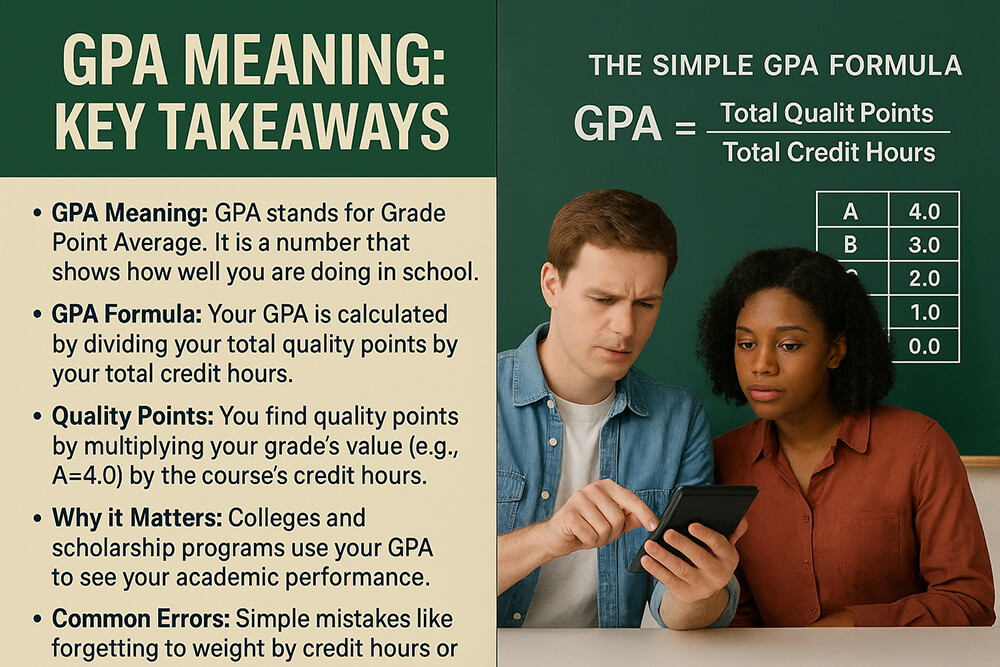Key Takeaways
- GPA Meaning: GPA stands for Grade Point Average. It is a number that shows how well you are doing in school.
- GPA Formula: Your GPA is calculated by dividing your total quality points by your total credit hours.
- Quality Points: You find quality points by multiplying your grade's value (e.g., A=4.0) by the course's credit hours.
- Why it Matters: Colleges and scholarship programs use your GPA to see your academic performance.
- Common Errors: Simple mistakes like forgetting to weight by credit hours or using the wrong grade scale can lead to an incorrect GPA.
What is a GPA and Why is it Important?
Your Grade Point Average (GPA) is a score that shows your average grade in school. Think of it as a summary of all your report cards in one number. It helps others quickly understand your academic performance. Colleges look at your GPA when you apply to see if you are a good fit for their school. Scholarship programs also use GPA to decide who gets money for college. Even some jobs look at your GPA to see how well you did in your studies. You can use a GPA calculator to easily find your score.
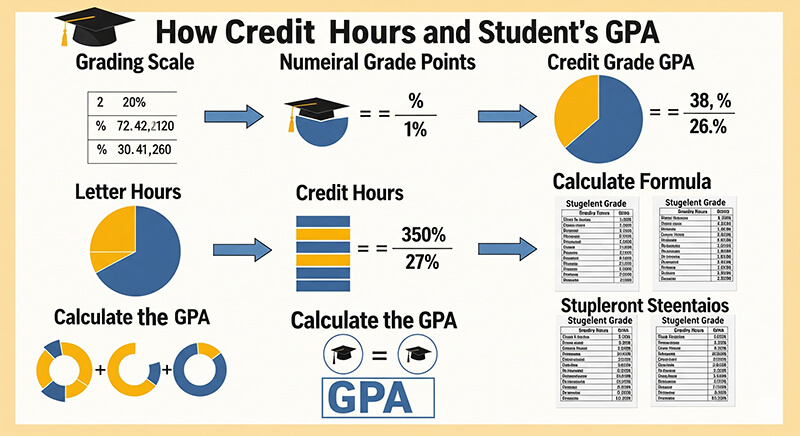
The Simple GPA Formula
The math behind your GPA is straightforward. It uses a specific formula to turn your grades into a single number. First, each letter grade is given points. Then, you multiply those points by the credits for each class. This gives you quality points. You add all your quality points together. You also add all your credit hours together. Finally, you divide the total quality points by the total credit hours. This gives you your GPA.
GPA Formula:
GPA = Total Quality Points / Total Credit Hours

Different Kinds of GPA
You might hear about a few different types of GPA. It is helpful to know what each one means. They each measure your performance in a slightly different way.
- Term GPA: This is your GPA for just one semester or term.
- Cumulative GPA: This includes your grades from all semesters. This is the GPA colleges look at.
- Unweighted GPA: This uses a standard 4.0 scale where every class is treated the same. An 'A' is always a 4.0.
- Weighted GPA: This gives extra points for harder classes, like Advanced Placement (AP) or honors courses. An 'A' in an AP class might be worth 5.0 points.
How Letter Grades Become GPA Points
To calculate your GPA, your letter grades must first be turned into numbers. Most schools in the U.S. use a 4.0 scale. An 'A' is worth 4 points, a 'B' is 3, and so on. Some schools also use plus (+) and minus (-) grades, which have their own point values. For example, a B+ is a 3.3 and a B- is a 2.7. It is important to know the exact scale your school uses. You can find more information in this letter-to-point GPA conversion guide.
| Letter Grade | Grade Points |
|---|---|
| A+ | 4.3 |
| A | 4.0 |
| A- | 3.7 |
| B+ | 3.3 |
| B | 3.0 |
| B- | 2.7 |
| C+ | 2.3 |
| C | 2.0 |
| C- | 1.7 |
| D+ | 1.3 |
| D | 1.0 |
| D- | 0.7 |
| F | 0.0 |
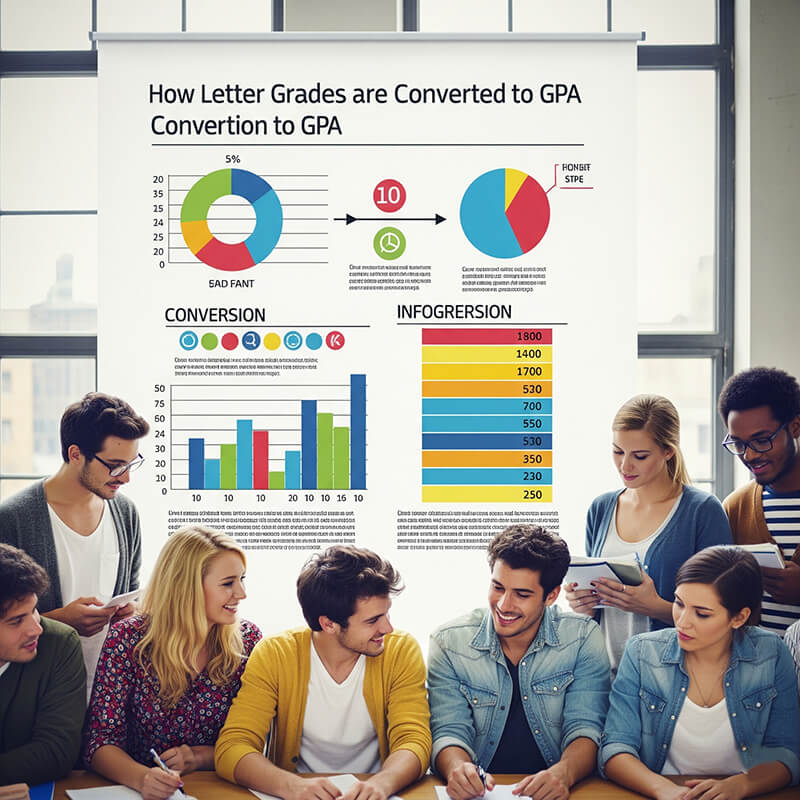
How Course Credits Affect Your GPA
Not all classes have the same impact on your GPA. The number of credit hours a class has shows how much it is worth. A class with more credit hours has a bigger effect on your GPA. For instance, getting an 'A' in a 4-credit science lab will raise your GPA more than getting an 'A' in a 1-credit gym class. The GPA formula accounts for this by multiplying your grade points by the credit hours. This process is called Credit-hour weighting and it ensures your GPA reflects your hardest work.
Quality Points and GPA are Different
People sometimes mix up quality points and GPA, but they are two different things. Quality points are the building blocks of your GPA. You get them by multiplying the grade points for a class by its credit hours. Your total quality points are the sum of the points from all your classes. Your GPA, on the other hand, is the average. You find it by dividing your total quality points by your total credit hours. So, quality points are the total score, while GPA is the average score. You can learn more about how quality points vs gpa explained here.

The Effect of Pass/Fail Grades on Your GPA
Some schools let you take classes on a Pass/Fail basis. This means you get a 'P' for passing or an 'F' for failing instead of a letter grade. How this affects your GPA depends on the grade. A 'Pass' grade typically does not affect your GPA at all. The class credits are not included in the calculation. However, a 'Fail' grade usually counts as a 0.0. The credits for the failed class are included in your total hours, which can lower your GPA significantly. Understanding how pass fail grades impact your gpa is key before choosing this option.
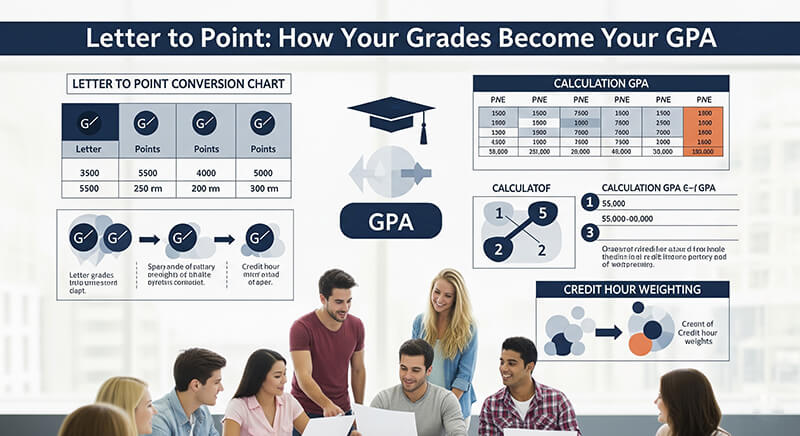
Mistakes to Avoid When Calculating Your GPA
Calculating your GPA yourself can be tricky. It is easy to make small mistakes that give you the wrong number. One common error is forgetting to multiply your grade points by the credit hours for each class. Another is mixing up the rules for Pass/Fail grades. Some students also use the wrong grade point scale, like thinking an A- is a 4.0 when it is really a 3.7. It is important to know your school's rules on rounding or truncating the final number. Avoiding these common gpa calculation errors to avoid will help you get an accurate result.
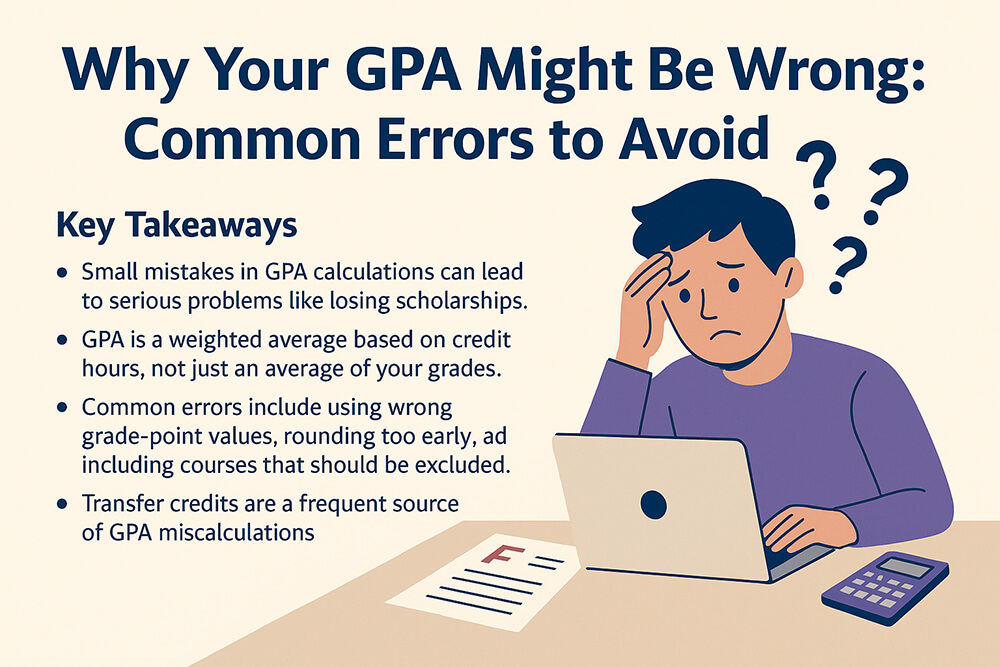
An Expert Tip for Accurate Calculations
As someone who has worked with student records for years, I've seen one mistake more than any other. Students often forget to update their calculations each semester. They might use an old GPA as a starting point and just add new grades without re-calculating everything from scratch. This almost always leads to an incorrect number. My best advice is to start fresh every time. List all your courses, grades, and credits from the very beginning. It takes a few extra minutes, but it ensures your final GPA is correct. Double-checking your work is the most important step.
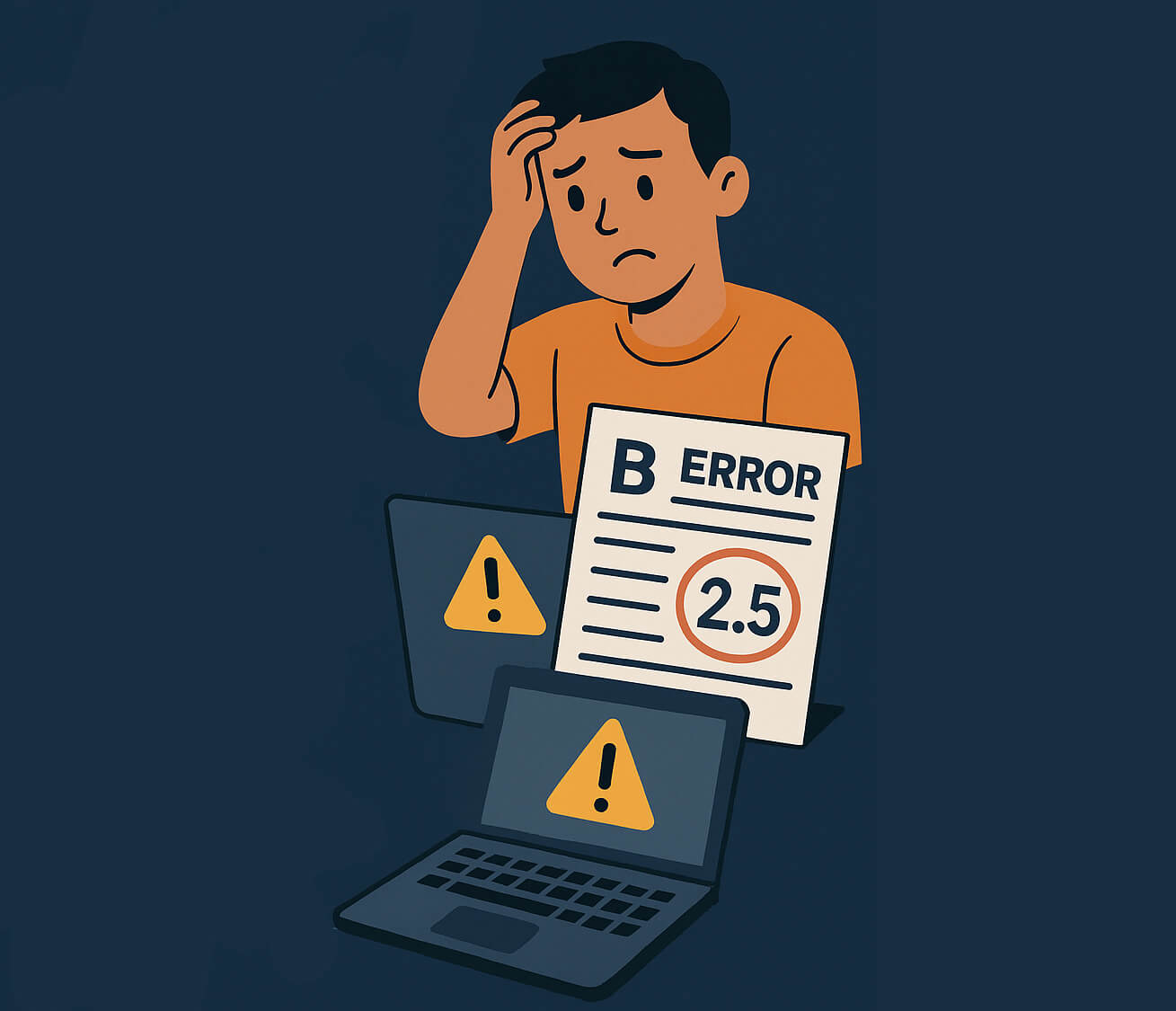
Frequently Asked Questions about the GPA Formula
What is a good GPA? A "good" GPA depends on your goals. For many colleges, a GPA above 3.5 is considered strong. Ivy League schools often look for a 4.0 or higher.
Is a 3.0 GPA good? A 3.0 GPA means you have a 'B' average. This is a solid GPA that is accepted by many colleges and universities.
How can I raise my GPA? To raise your GPA, you need to earn higher grades, especially in classes with more credit hours. Retaking classes you did poorly in can also help if your school replaces the old grade.
Do weighted or unweighted GPAs matter more? Colleges often look at both. The unweighted GPA shows your overall performance, while the weighted GPA shows that you challenged yourself with harder classes.
Does retaking a course replace the old grade? This depends on your school's policy. Some schools will replace the old, lower grade with the new one. Others will average the two grades together. Always check with your school's registrar.
